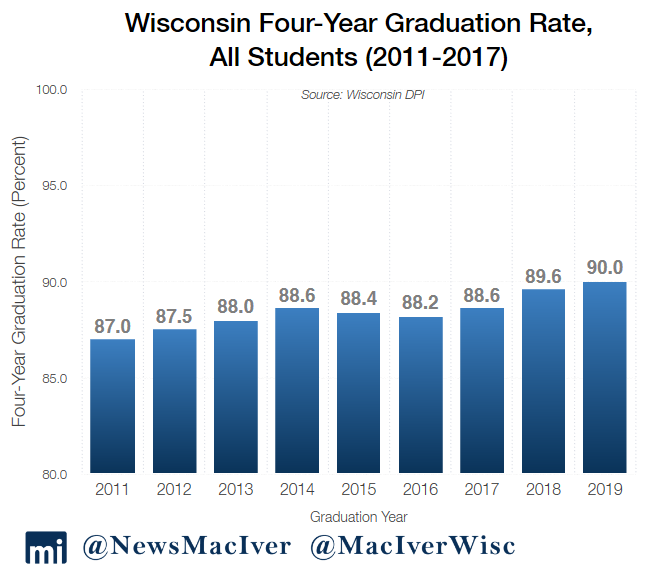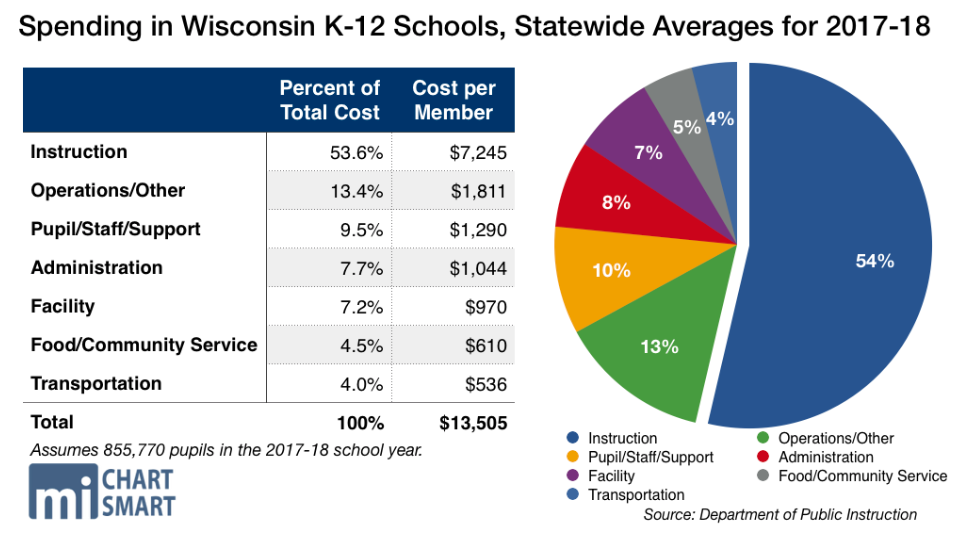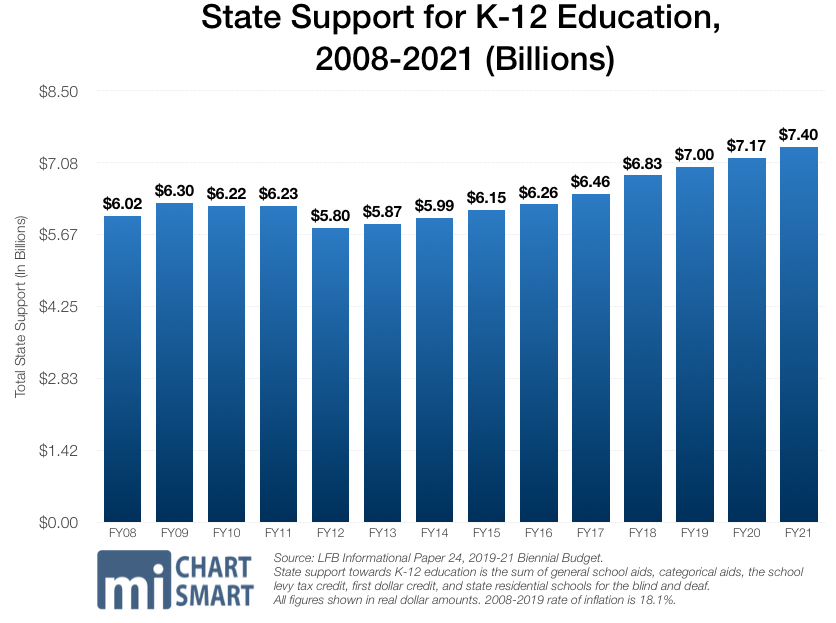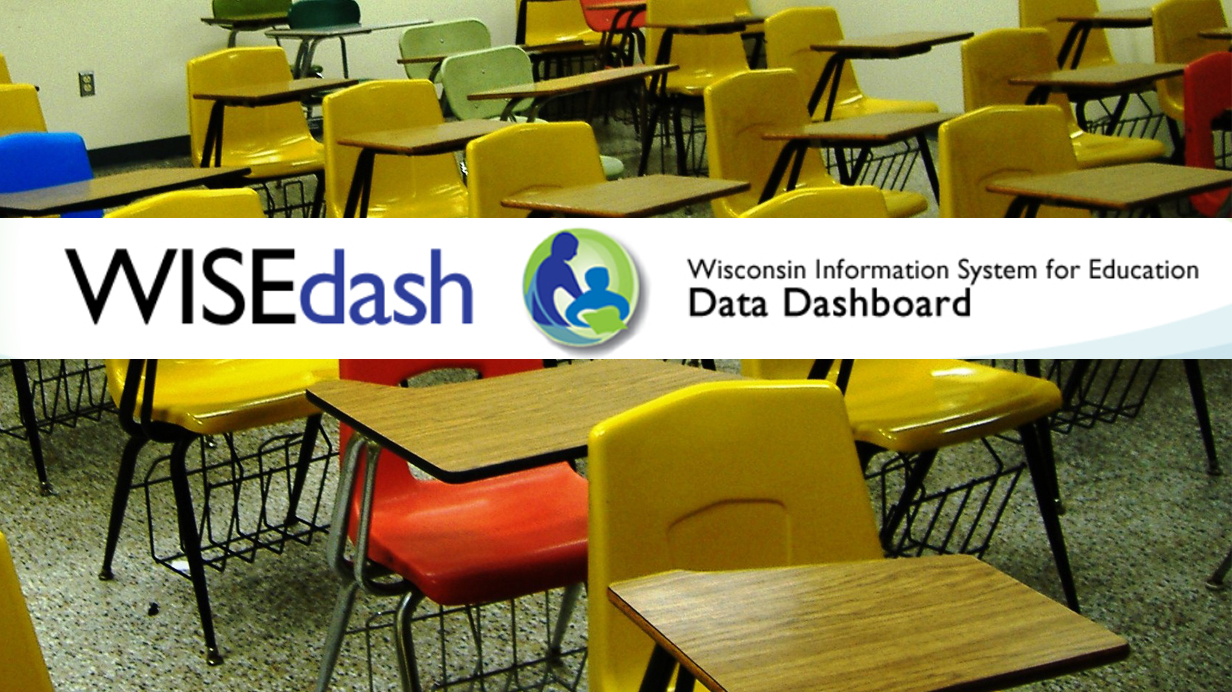
Data Release 2020: Wisconsin Department of Public Instruction releases new data on student performance and achievement.
Achievement gap continues to close.
Mar. 10, 2020
By Ola Lisowski and Bill Osmulski
Wisconsin high schools graduated 161 fewer students in 2019 than in 2018, but due to declining enrollment, that comes out to a 0.4 percent increase in the graduation rate, according to a new data release from the state Department of Public Instruction (DPI).
Meanwhile, ACT test scores ticked downward slightly from 20.4 to 20.1 percent and participation dropped from 92.8 percent to 91.9 percent.
DPI’s dataset focuses on the class of 2019 and includes metrics such as graduation rates, ACT results, Advanced Placement (AP) Exam results, attendance, dropout rates, and post-graduation plans. The expansive data release also includes the latest statistics in student behavioral issues, showing an increase in campus cases of endangering behavior. Enrollment figures for the 2018-19 class are also included.
The graduation rate for the class of 2019 rose to 90 percent, up from 89.6 percent in 2016. The figure dipped between 2014 and 2016 but has generally trended slowly upward. At the same time, the achievement gap between white and black students decreased to 22.5 points from 24.2.
“The promising trends we see among Wisconsin graduates are a tribute to the tireless work and dedication of our teachers and students,” State Superintendent Carolyn Stanford Taylor said. “It is encouraging to see Wisconsin students graduating at higher rates than we’ve seen in a long time.”
Last year 93.8 percent of white students graduated in four years and 71.3 percent of black students graduated in four years. For the class of 2018, 93.5 percent of white non-Hispanic students graduated in four years, while just 69.3 percent of black students graduated in four years, amounting to a 24.2 point achievement gap. In 2011, the white-black achievement gap was 27.6 points, meaning the gap has closed by 5.1 points in eight years.
Hispanic/Latino students have shown the largest graduation achievement improvement of any racial or ethnic group since 2011, when 72.0 percent of students graduated high school in four years. Eight years later, 82.8 percent of Hispanic/Latino students graduate on time, a 10.8-point improvement.
Graduates of the class of 2019 earned an average score of 20.1 out of 36 points on the ACT Exam, a decrease from the average 20.4 score of the class of 2018. The participation rate decreased, at 91.9 percent of 2019 graduates taking the ACT Exam, down from 2018’s 92.8 percent participation rate.
Fewer high school students are taking AP Exams, and fewer students are earning college credit with those exams. Students with an AP Exam of three or higher are awarded college credit at many universities, including those in the University of Wisconsin System.
16.8 percent of students took an AP exam, compared to 16.9 percent the year before. 66.3 percent of AP Exams that students took in May 2019 had scores of three or higher. In 2018, 66.5 percent of exams were scored three or better.
Overall, Wisconsin students took 1,300 fewer AP exams last year than the year before. In 2017-18 they took 74,962 exams, in 2018-2019 they took 73,644 exams. That’s a big improvement from 8 years before, when only 46,647 exams were taken.
Still, the overall participation rate remains low, at 16.8 percent in 2019. This is the first decrease (albeit small) since 2010. In 2018, 16.9 percent of students took an AP Exam.
Attendance rates held steady at 93.9 percent, the same as in 2017-18. The statewide dropout rate fell to 1.3 percent from 1.4 percent the prior year.
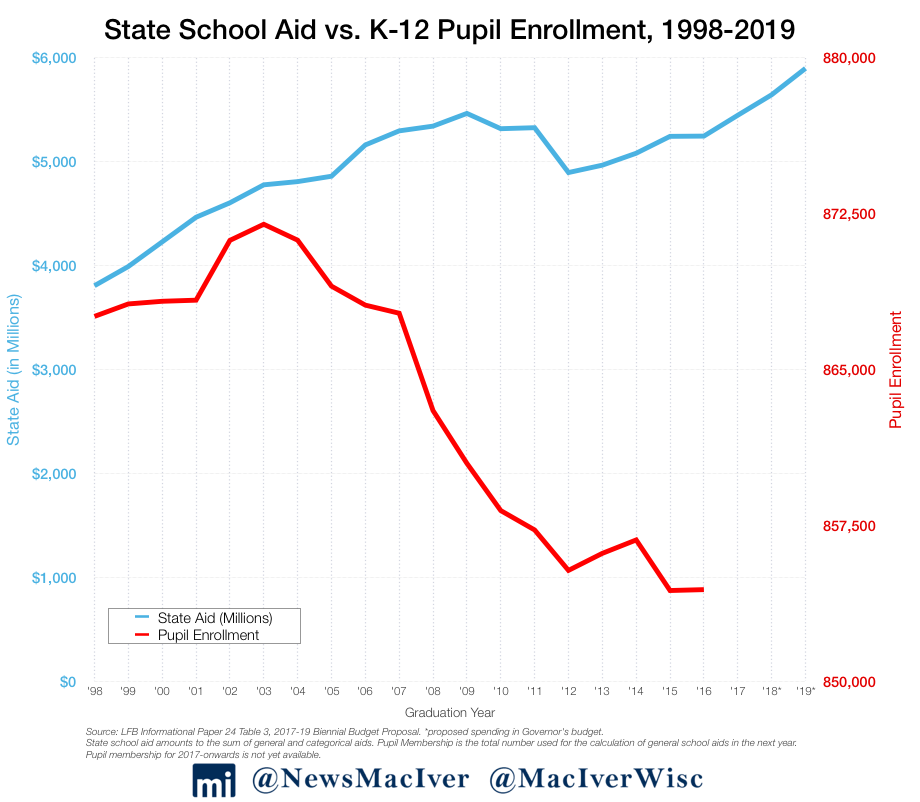 While a minuscule change, the attendance rate is now at a six-year low. In the 2013-14 school year, student attendance was 95 percent.
While a minuscule change, the attendance rate is now at a six-year low. In the 2013-14 school year, student attendance was 95 percent.
Postsecondary enrollment for all students also fell to 58.2 percent from 59.3 percent in 2017-18. This continues a strong trend of students opting out of college in recent years. The data includes students who attend public or private two- or four-year colleges, technical schools, or training programs.
Prior years had also shown a troubling increase in disciplinary incidents involving students. This year, that trend continued. DPI began reporting on incidents involving assault, drugs and alcohol, endangering behavior, weapons, and any other violation of school rules in the 2016-17 school year. In 2018, the incident rate for all students increased to 8.1 percent, up from 6.8 percent the prior year. In 2019, that rate rose to 8.5 percent.
Statewide, there were 715 students were expelled in the 2018-19 school year. That’s a big jump from the year before when there were 545 expulsions. This is a 29 percent increase.
Overall student enrollment continues to fall, with a 0.45 percent decline from the prior year. The third-Friday headcount September 2019 showed that 854,959 children attend Wisconsin K-12 schools. Last year it was 858,833, and the year before it was 860,138.
Enrollment has long trended downward in Wisconsin schools. At the same time, public education system spending has increased dramatically.
For the first time, DPI has began collecting data on student homelessness. In the 2018-19 school year, it found 18,349 students (2.1 percent) were homeless.

